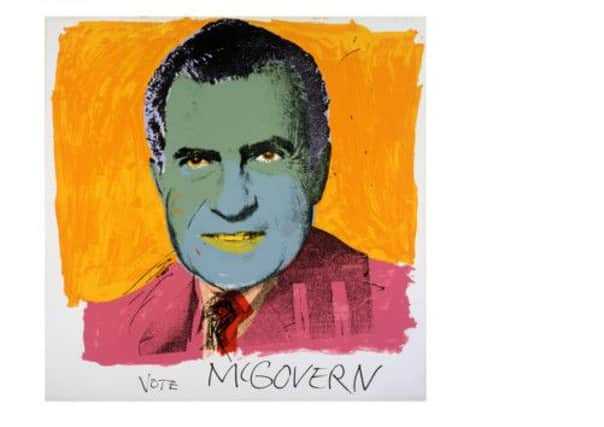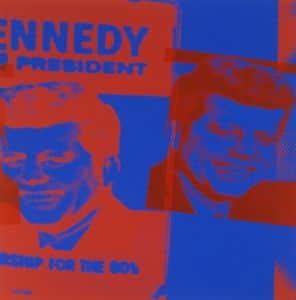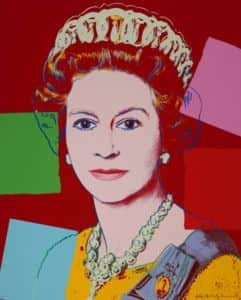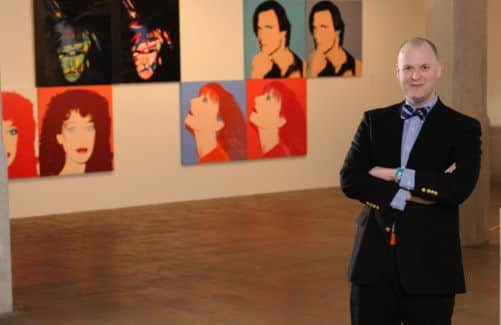Scottish Parliament stages Andy Warhol exhibition


The first exhibition of Warhol’s work in the UK to focus specifically on politics will open on 5 October at the Scottish Parliament. Andy Warhol: Pop, Power And Politics is also the first exhibition of the artist’s work to take place in a Parliamentary building, and will include a number of iconic works never shown before in Scotland.
The exhibition continues to establish the Parliament as an important venue for art exhibitions, coming directly after the inaugural showing of the Great Tapestry of Scotland, which has been attracting record numbers of visitors. Eric Shiner, the director of the Andy Warhol Museum in the artist’s home town of Pittsburgh, which has loaned many of the works in the show, praised the Scottish Parliament: “Having exhibitions in government buildings is a fairly rare occurrence and the Scottish Parliament is being very liberal in its thinking for going in this direction. Perhaps it would be a great thing if other countries followed suit.”
Advertisement
Hide AdThe show is part of a 16-week celebration of the legacy of Scots-American industrialist, Andrew Carnegie, and a key exhibit is a painting by Warhol of Carnegie, who was born in Dunfermline, and made his fortune in steel in the city of Pittsburgh. Warhol attended art classes at the Carnegie Museum when he was at high school in the 1930s, and later studied pictorial design at the Carnegie Institute of Technology. Carnegie funds were then used to help establish the Andy Warhol Museum, which was started by the artist’s own legacy.


Warhol was born in Pittsburgh in 1928 to poor east European immigrant parents. After studying design, he went on to build a highly successful career as a commercial artist working in advertising in New York in the 1950s. His first solo exhibition of what was becoming known as “pop art” took place in 1962, and included iconic works such as the Marilyn Diptych and 100 Cans. Visionary and sometimes controversial, he blurred the boundaries between art and advertising, high and low culture. And he was careful never to disclose his political loyalties.
“He was a marketing genius, and knew that to be truly successful one should never commit to one side or the other,” says Shiner. “He realised that many of the customers buying his work were Republican and somewhat conservative, and that buying Andy Warhol was a way to be a little less stuffy, whereas most of his inner circle were incredibly liberal and left-leaning. He definitely leaned Democratic, but there was a strong fiscal conservative side to him – he wanted to maintain as much of his wealth as he could.”
Some of Warhol’s earliest political works concern the assassination of John F Kennedy in 1963, though that had less to do with Kennedy’s politics than the potent mix of celebrity and tragedy to which Warhol was always drawn. “I often explain Warhol as constantly jumping back and forth between these two poles: celebrity and fame and wealth on one side, and death and disaster and tragedy on the other,” says Shiner. “For him those were the two poles which American culture was constantly balancing between. President Kennedy’s assassination and Marilyn Monroe’s death were particularly perfect for Warhol because they encapsulate all those things: wealth, glamour, fame, tragedy, disaster – it’s all there.”
After JFK’s death, Warhol began a series of portraits of Jackie Kennedy, based on images in the international press following the shooting, and what would become his screenprint series Flash-November 22, 1963, using headlines and stories from newspapers and gossip magazines. “He was always drawing images from mainstream media,” says Shiner. “From his work in advertising, he was very conscious of the power of an image to change opinion, or to make people consume.”


In 1972, when George McGovern was fighting it out against Richard Nixon for the White House, Warhol made what might be his most explicit declaration of his own political hand. He made a picture with the handwritten slogan “Vote McGovern” but with a sinister, green-skinned image of Nixon’s face. “Whether by coincidence or not, that very year, Warhol was audited by the IRS for the first time,” says Shiner. “Warhol was convinced that Nixon called the IRS and said ‘Audit Andy Warhol!’ just to pay him back.”
Advertisement
Hide AdThe following year, he made one of his most important series of political portraits – of Chinese leader Chairman Mao. “In the early 1970s, Mao was front page news in America because of Nixon’s visit to China. I think at that point Warhol was known for his celebrity images, and by painting a political figure, all of sudden Warhol elevated Mao to the celebrity realm.”
Warhol was, by this time, a celebrity himself, and an association with him was considered worth having. In 1976, he was commissioned to do a series of portraits by the new incumbent of the White House, Jimmy Carter. His paintings of Carter, his wife and his mother, Lilian, were then sold to raise money for party funds. “It was like the Clintons courting Hollywood royalty, or Oprah,” says Shiner.
Advertisement
Hide AdWarhol would later paint Ronald Reagan, drawing on an image created when he was a Hollywood B-list actor, in an ad for Van Heusen shirts. “When you think about Mao going from political leader to celebrity through Warhol, Ronald Reagan goes from celebrity to politician in real life. That’s why Warhol was interested in both Ronald and Nancy.”


But it was perhaps the equanimity with which he treated his subjects which may have been the most radical thing of all: a dead celebrity, a propaganda image of a dictator, a car crash or a can of soup, all were commodities, images – and an image, Warhol knew, had tremendous power. He made everyday objects famous, and celebrities mundane, and every day we live with his legacy.
Andy Warhol: Pop, Power and Politics is at the Scottish Parliament, 5 October until 3 November. The exhibition is free but reserving tickets is recommended, www.scottish.parliament.uk/warhol, tel 0131-348 5454 or email [email protected].